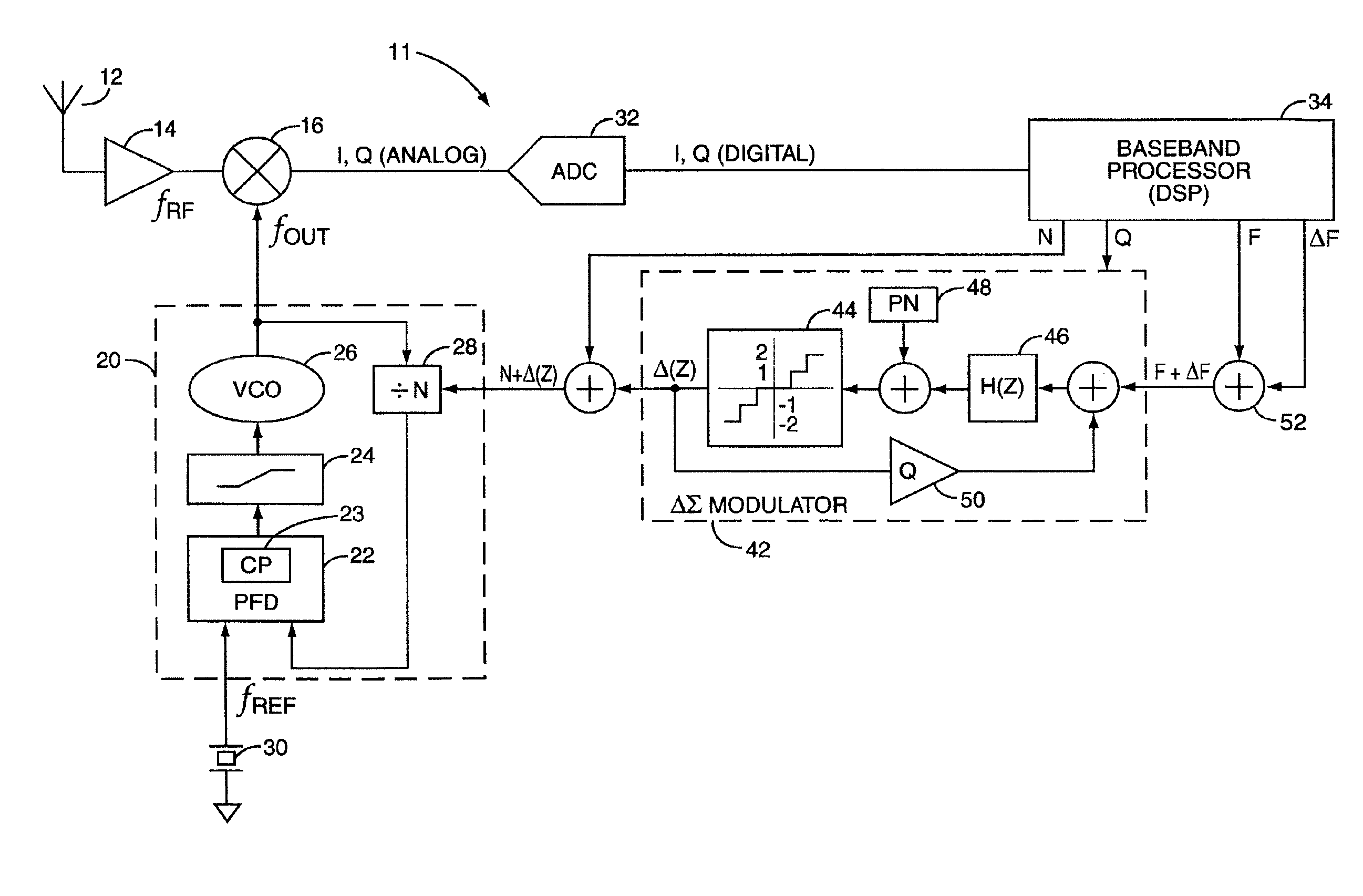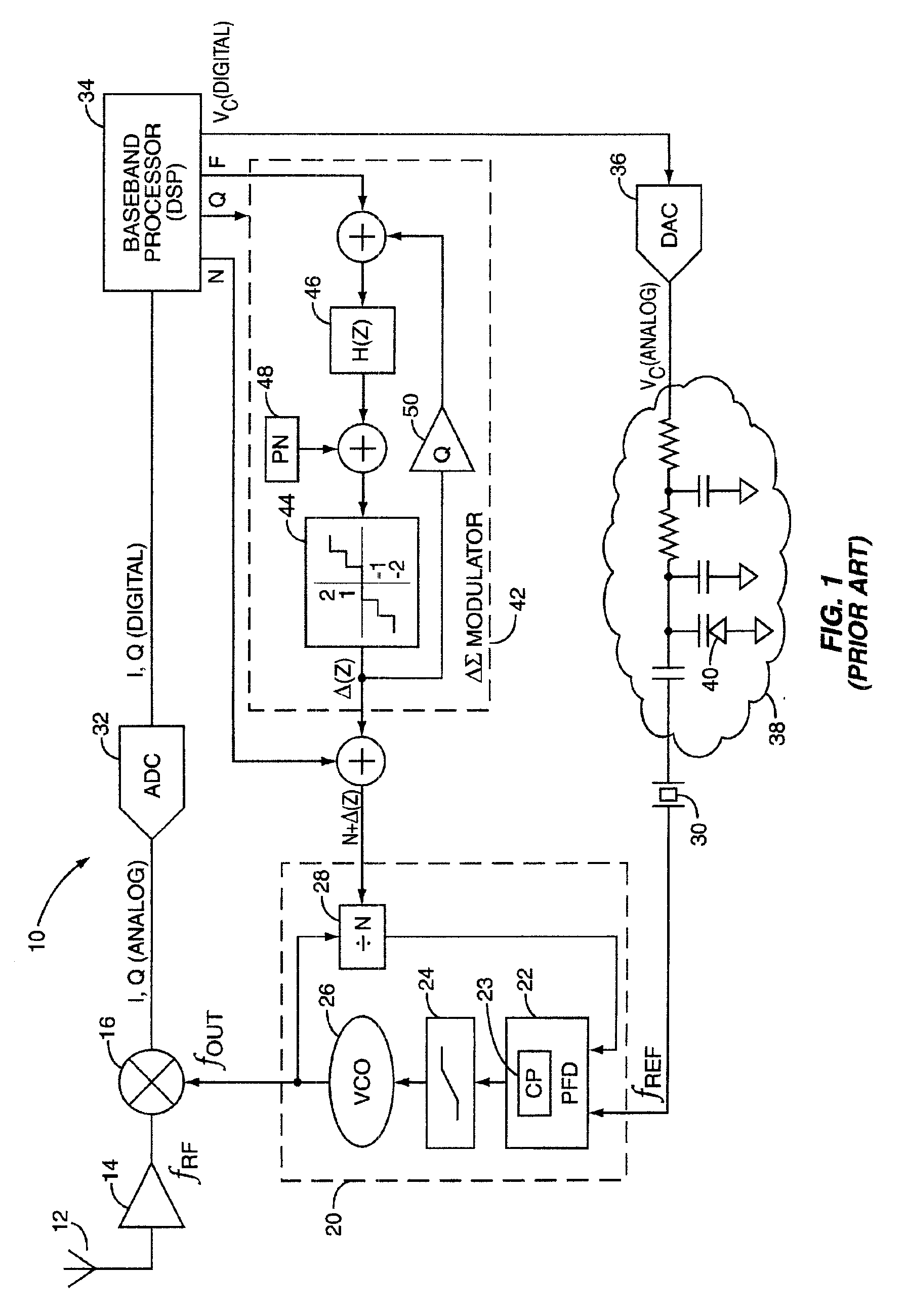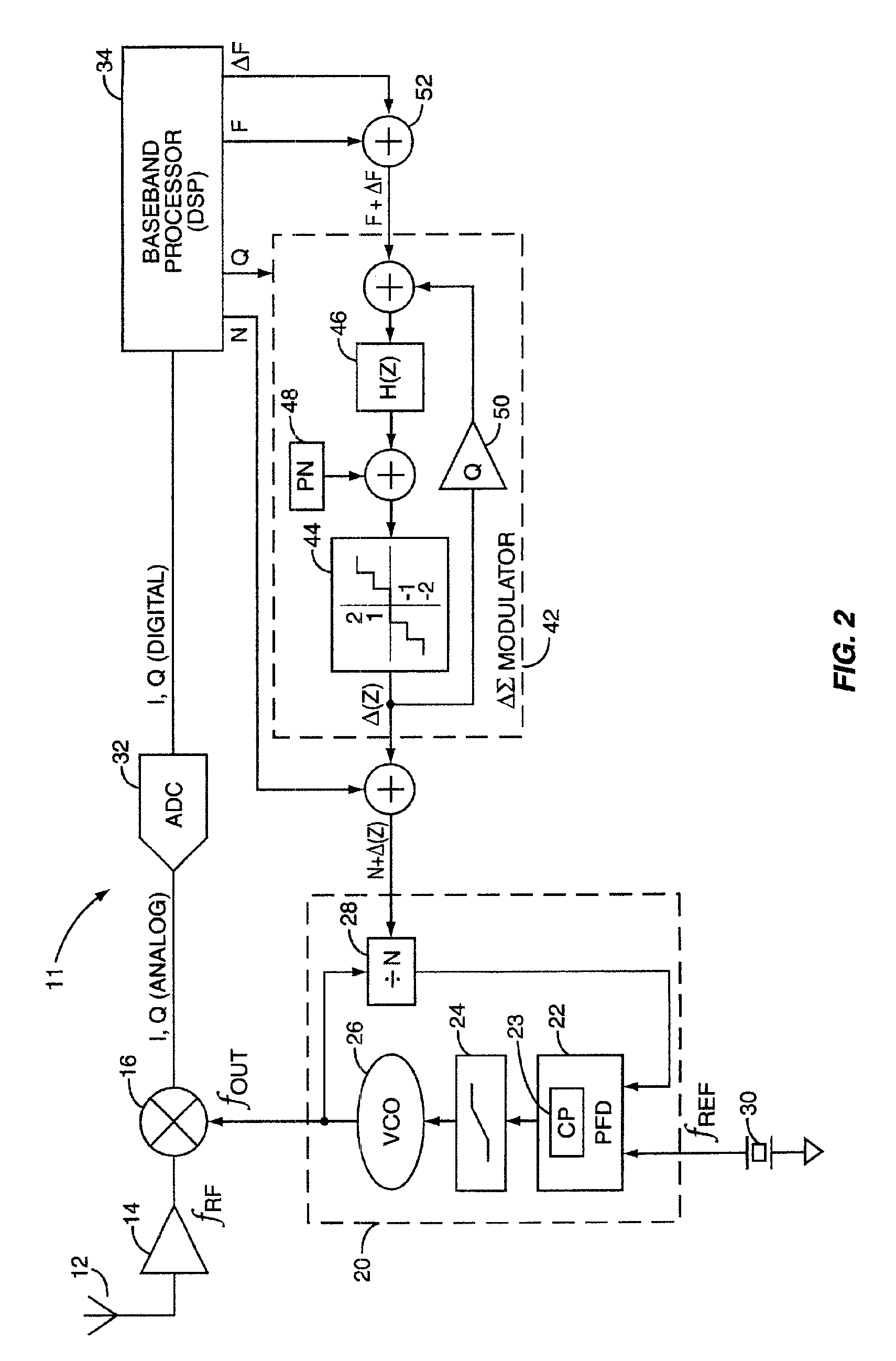Direct automatic frequency control method and apparatus
a frequency control and automatic technology, applied in the field of wireless communication, can solve the problems of increasing the cost of mobile terminals, consuming printed circuit board space, and many errors that change non-linearly, and achieve the effect of reducing errors
- Summary
- Abstract
- Description
- Claims
- Application Information
AI Technical Summary
Benefits of technology
Problems solved by technology
Method used
Image
Examples
Embodiment Construction
Modern mobile communication terminals use Phase Locked loop (PLL) frequency synthesizers to control the receive and transmit channel frequencies. The general architecture of a PLL-based Automatic Frequency Control (AFC) circuit for downconverting a received RF signal to baseband is depicted in FIG. 1, indicated generally at 10. A transmitted RF signal at frequency fRF is received at antenna 12, amplified by RF low-noise amplifier 14, and mixed with frequency fOUT at mixer 16 (multiple conversion (>1) hetrodyne receivers may include additional downconversion mixers). The frequency fOUT is generated by a Phase Locked loop 20, based on a reference frequency fREF generated by a crystal (XTAL) oscillator 30 and its associated control circuit 38. The mixer 16 outputs sum and difference components (fRF+fLO) and (fRF−fLO), which are digitized by Analog to Digital Converters (ADC) 32, and processed by a baseband processor 34. The baseband processor 34 detects and extracts information symbols...
PUM
 Login to View More
Login to View More Abstract
Description
Claims
Application Information
 Login to View More
Login to View More - R&D
- Intellectual Property
- Life Sciences
- Materials
- Tech Scout
- Unparalleled Data Quality
- Higher Quality Content
- 60% Fewer Hallucinations
Browse by: Latest US Patents, China's latest patents, Technical Efficacy Thesaurus, Application Domain, Technology Topic, Popular Technical Reports.
© 2025 PatSnap. All rights reserved.Legal|Privacy policy|Modern Slavery Act Transparency Statement|Sitemap|About US| Contact US: help@patsnap.com



